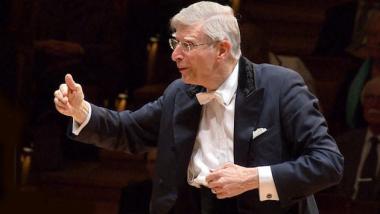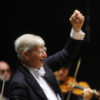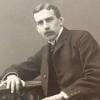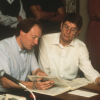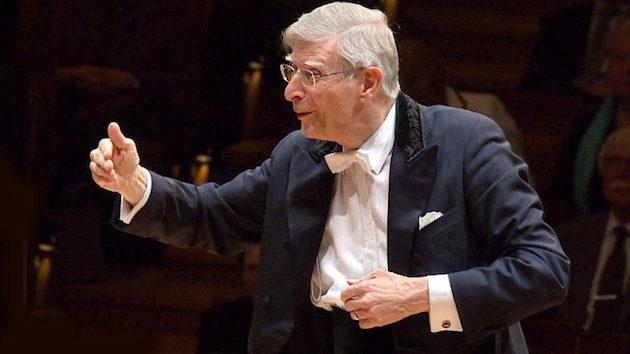
Conductor Laureate Herbert Blomstedt took the podium at the San Francisco Symphony this week with a typical program: the off-the-beaten-track Symphony No. 1 in G Minor, “Sinfonira Sérieuse” (Serious Symphony), by Franz Berwald, and Brahms’s Symphony No. 3 in F Major. Also typical: Blomstedt led the most recent SFS performances of both works, the Brahms in 2017, the Berwald back in 1991, and the latter was also the first performance given by the orchestra.
Blomstedt’s performances were also typical of the conductor: refined, poised, beautifully balanced, and played with a bit of emotional restraint. The Berwald was particularly notable for the transparency of the orchestra’s sound, with every line audible from the high winds to the basses, emphasizing counterpoint and counter themes. But that’s another important facet of Blomstedt’s style; you can hear him thinking both vertically and horizontally about the sound of the orchestra and the long-range musical logic of whatever he’s leading.
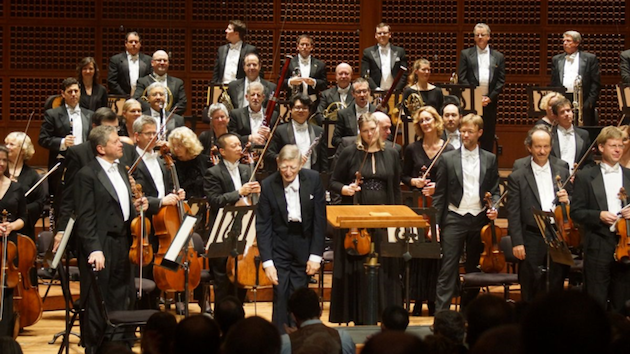
Given the conductor’s vigor and ability to lead a program without a score, it seems scarcely credible that he’s 92. One can but wish him more years of good health — and more visits to San Francisco, especially when the results are as fine as in this concert.
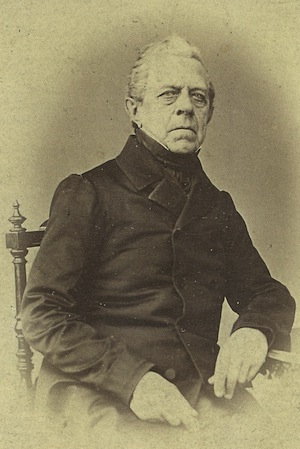
The rarely-performed “Sérieuse” is a fine piece that really ought to be done more often, as should all of Berwald’s symphonies. The work has its share of surprises and eccentricities: the prominence of the trombones, which in the first movement provide commentary and counterpoint to the strings and high winds, the jolly development in that movement, the shifting major and minor tunes. Above all, there’s the surprising transition from the roiling Stretto (Berwald’s name for the scherzo-like third movement) to the last movement, where it’s not entirely clear for some measures whether you’re hearing a coda to the third movement or the start of the fourth. Blomstedt was masterfully suspenseful in this. And right at the end of the symphony, the composer works in a quotation from, or tribute to, the first movement of Beethoven’s Fifth Symphony.
These two symphonies make good companions: they call for the same wind and brass forces. For the Berwald, written some 40 years before the Brahms, the conductor used a smaller number of strings. For both works, he seated the first violins to his left and the seconds to his right, with the cellos and basses next to the firsts and violas next to the seconds, so you could hear melodic responses thrown back and forth across the stage.
Blomstedt’s Brahms Third was, by and large, masterly, particularly in his handling of the many metrical and tempo changes in the first movement, always a tricky matter in Brahms and yet crucial to highlighting the harmonic shape of this symphony. He brought a real sense of musical and sonic mass leading up to the recapitulation toward the end of the movement. The second movement could not have had more charm, and a big highlight was the sheer beauty of the winds. I do wish the third movement had been more broadly and emotionally played; it was, perhaps, too smooth and restrained. The last movement was much more sharply defined, with snappier rhythms and more dynamic contrast.
Special kudos, in the Brahms, to several players: principal horn Robert Ward, who played with his usual elegance in the first and third movement solos; principal clarinet Carey Bell, particularly in the second movement; associate principal bassoon Steven Dibner; and to the entire trombone section for their contributions throughout the concert.

